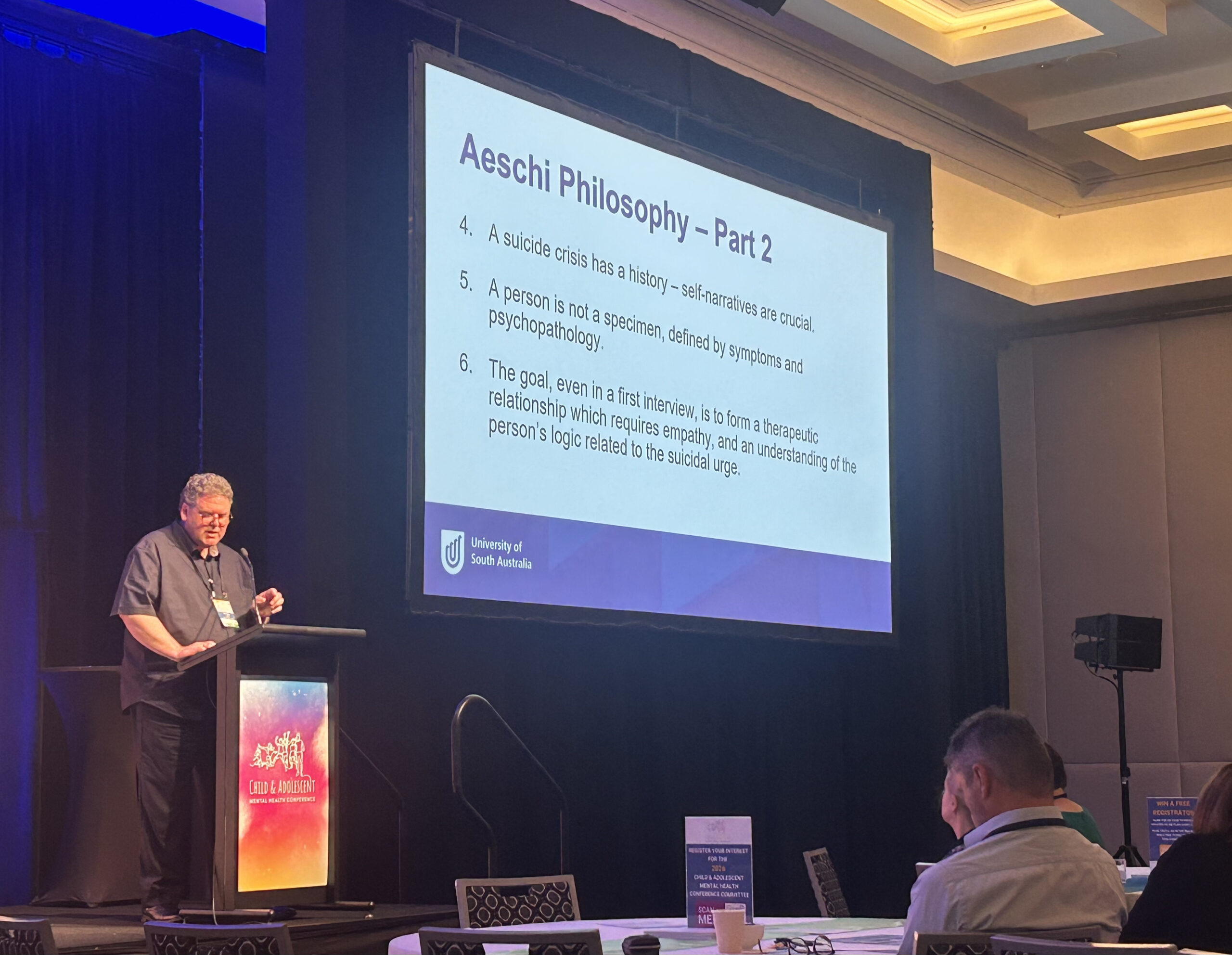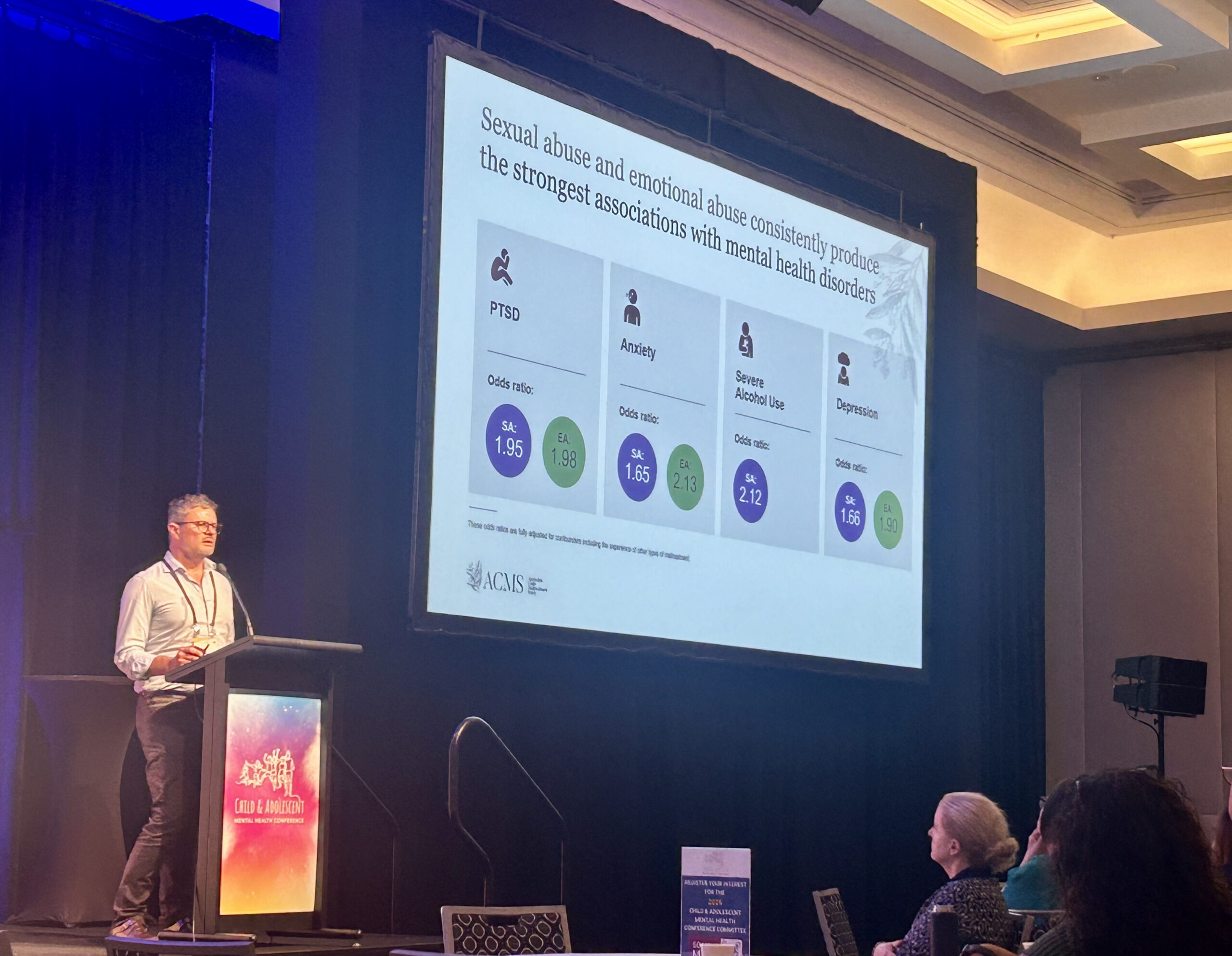Child and adolescent mental health conference 2025
Each year in March, the Australian & New Zealand Mental Health Association hold the Child and Adolescent Mental Health (CAMH) Conference in the Gold Coast, Queensland, Australia. Hundreds of people with lived expertise, mental health practitioners, and/or researchers come together to discuss current issues and themes in mental illness, mental health, and wellbeing for children and young people. The conference typically runs for two and a half days, with morning and afternoon keynote presentations, workshops, as well as oral, poster, and panel presentations.
In 2025, the conference was held Monday 24 to Wednesday 26 March. You can read about this year’s conference and keynote speakers on the CAMH Conference 2025 website, and access the conference program to see the contributors and trends in topics covered. Some key themes that stood out to me were understanding and supporting families impacted by suicide, working with neurodivergent young people, as well as the importance of centring and being guided by children and young people in mental health services.
I attended this year as part of my Research Fellow role with the Australian Institute of Family Studies. Our team, the Child Family Community Australia information exchange (CFCA) delivered two poster presentations and a panel presentation. CFCA develops practice resources for practitioners supporting children and families, based on the best available research and practice evidence. All of our written practice resources and webinars are open access and they cover a very broad range of practice topics.
Coercive control panel presentation
Coercive control is a public health and safety issue in urgent need of response in Australia and globally. As the concept of coercive control has become better known and understood, policy and legal reforms related to coercive control response and prevention have attracted increasing debate and rapid change. Some jurisdictions across Australia have criminalised coercive control and the Commonwealth government has published National Principles to Address Coercive Control.
Kylie Butler, Dr Melissa Willoughby and I presented the findings from a series of rapid literature reviews on coercive control and related abusive behaviours. Ours was the only panel presentation for CAMH Conference 2025. In developing this content, we consulted practitioners, service leaders and researchers who are experts in domestic, family and sexual violence. The content we presented in this panel session came from three published resources about coercive control victimisation, the ways that technology can be used to extend the perpetrators reach and violence against family animals to enact coercive control. By considering various aspects of coercive control alongside each other we aimed to provide a more holistic understanding of coercive control and its impacts. In each of the three pieces of work, we found negative mental health outcomes for victim-survivors.
You can access the presentation slides here.

After presenting the content, we had just under 30 minutes of discussion with the audience. The discussion was robust and covered a wide range of topics, including:
- challenges in defining and measuring intimate partner violence (IPV)
- reproductive coercion
- systemic challenges faced by families and practitioners
- evolving methods of technology-facilitated coercive control
- societal attitudes about victim-survivors of IPV
- legal considerations related to violence against family animals.
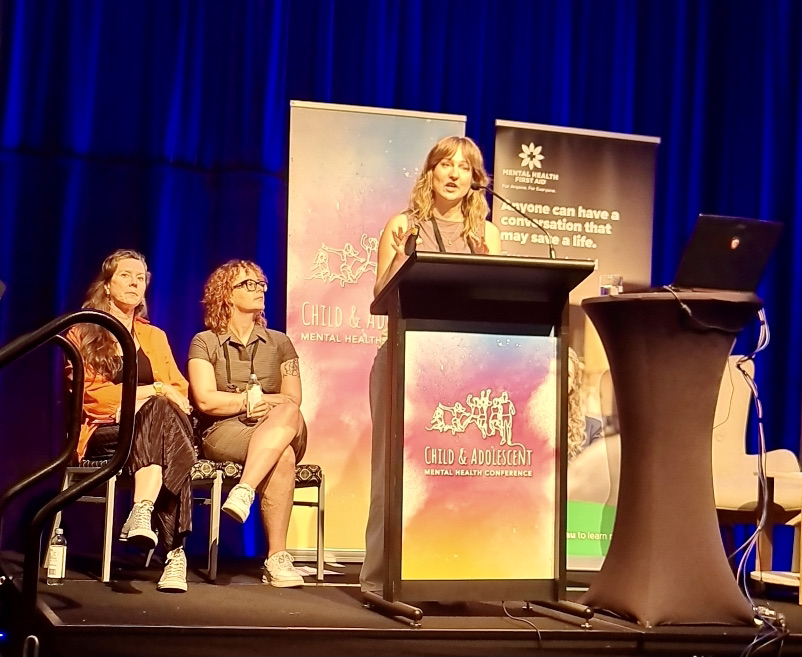
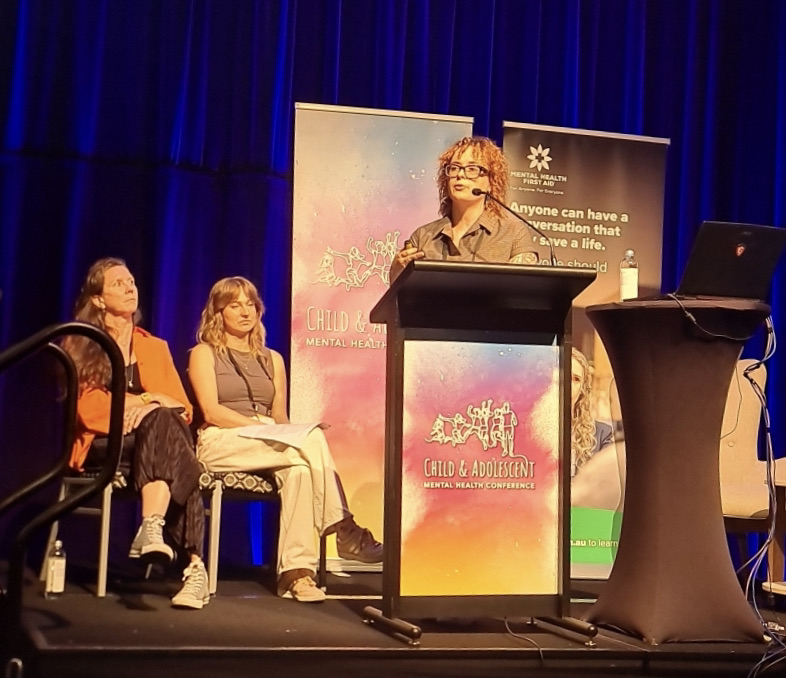
Thank you to the other researchers behind this work who were not there with us on the day: Dr Pragya Gartoulla, Eliza Cotton, Associate Professor Evita March, Dr Kristel Alla, Cat Strawa, and Dr Mandy Truong.
Our poster presentations
Supporting child wellbeing through nature play
Kylie Butler presented a poster on promoting child wellbeing through nature play. This poster was based on work led by Dr Kristel Alla, with contributions from Kylie, myself and Dr Mandy Truong. You can access the multiple nature play resources created by the team on the AIFS website.
The poster:
- described what nature play is, what its key features are, and how it benefits children
- provided practical tips for supporting parents in addressing safety concerns and engaging with nature as a family
- discussed the strengths and limitations of existing evidence on nature play, offering recommendations for future research and practice
- encouraged participants to develop innovative strategies to support children’s wellbeing through nature play, fostering a healthier, happier, and more socially engaged generation.
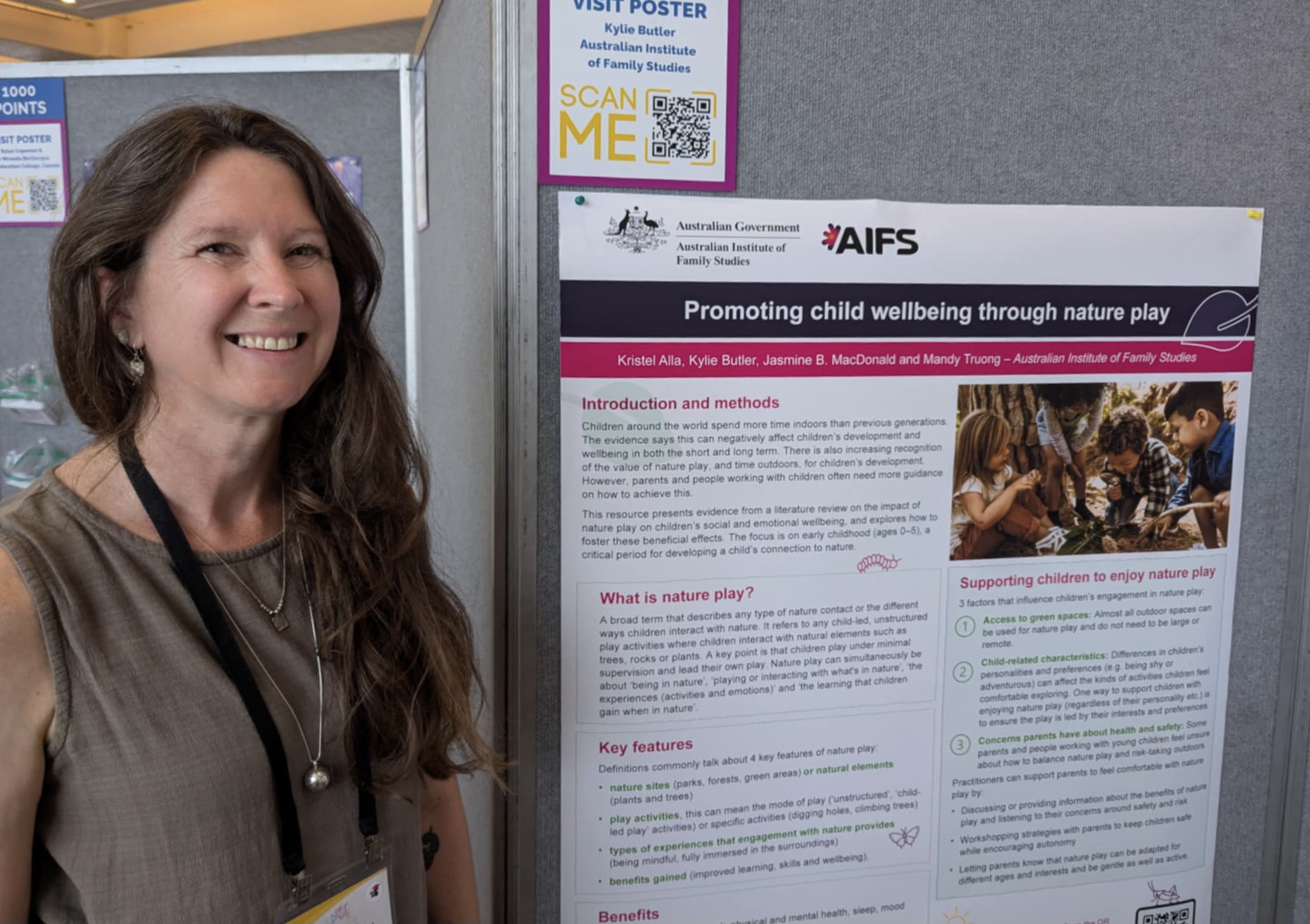
Trauma-informed research and evaluation
I presented a poster on trauma-informed research and evaluation. The poster was based on two published resources: one on principles of trauma-informed research and evaluation, and another about how to do trauma-informed research and evaluation. You can see the full version of the poster on the AIFS website.
I find that poster presentations can be the most time-consuming kind of conference output. It takes a lot of thinking and time to condense work down to such a small space and deliver key messages in a visual format. Our trauma-informed research and evaluation poster was skilfully created by Holly Helprin. Thanks also to the others in the research team behind this work: Kylie Butler, Dr Melissa Willoughby, Dr Pragya Gartoulla, and Dr Will Dobud.

My favourite presentations
CAMH Conference 2025 was an enjoyable and informative 3 days. I want to share some my favourite talks. There were other great talks I attended, and certainly great talks that I missed given the 3 concurrent streams.
Dr Kate Aitchison and Farah Suleman from Children’s Health Queensland delivered workshop called Creative Arts-Based Interventions to Address Trauma: Practical Strategies for Supporting Children, Adolescents and Caregivers. This involved a range of practical strategies for incorporating music and art into work with young people. A couple of points that I found interesting:
- the use of body mapping to identify where we feel changes in our bodies when listening to music
- that some folks still have the misconception that listening to certain kinds of music can make youth more violent
- the importance of starting out with dry mediums (e.g. crayons) as opposed to wet mediums (e.g. clay) when working with young people who have experience trauma.
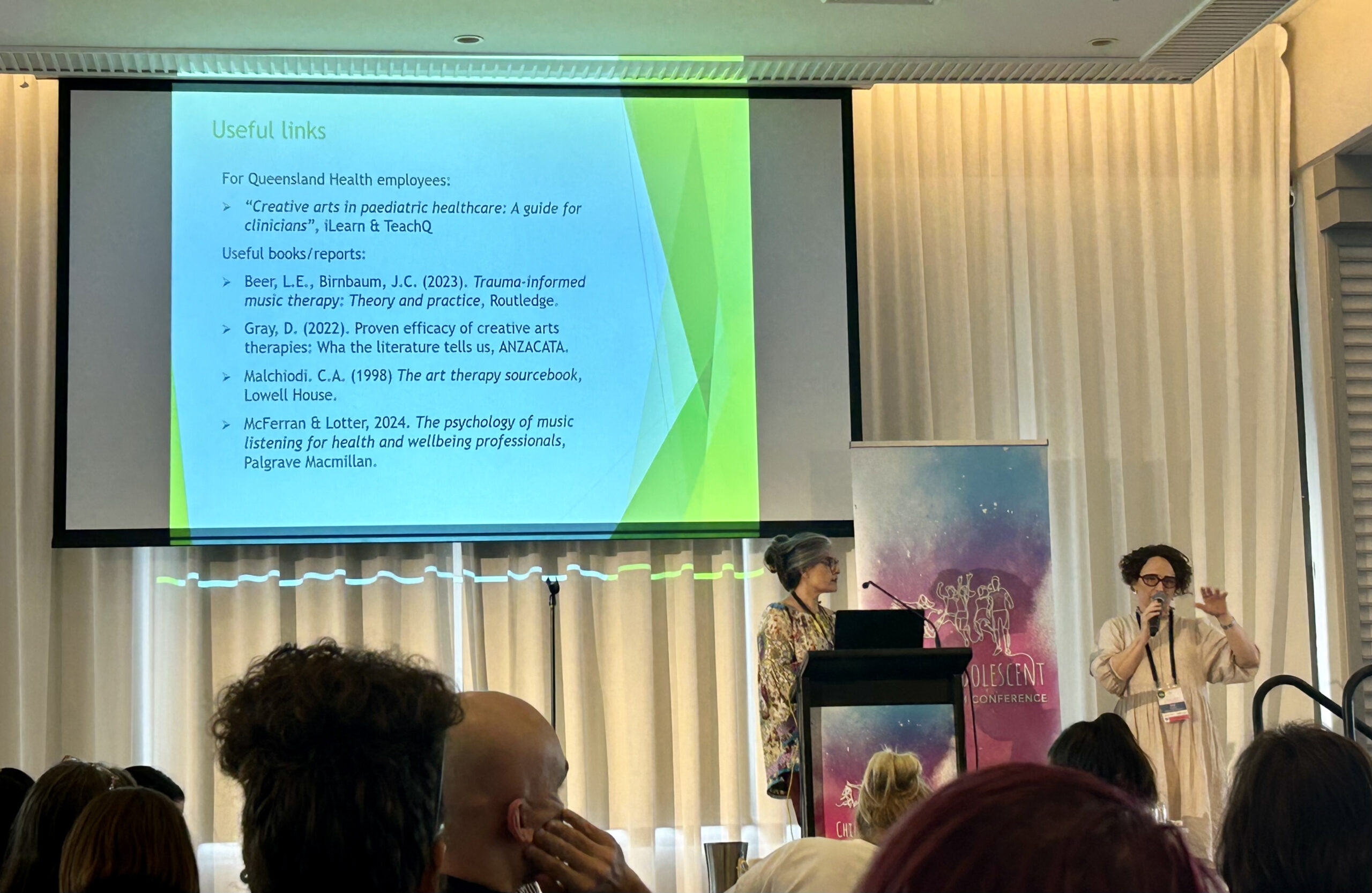
Kirstie Northfield from Charles Sturt University described who can make reliable proxy judgements of adolescent wellbeing. This presentation was based on Kirstie’s research with young people describing with whom, when and how they share their low feelings. Kirstie explained that young people employ deliberate consideration and control over who and when to share their low feelings, both verbally and through nonverbal cues. They want to be heard without judgement or to be offered solutions. A highlight of this talk was the rules of engagement for adults looking to support young people in discussions about wellbeing and low feelings.
Kirstie is an impressive human who has a particular skill for making connections between ideas and people. I am excited to see more of Kirstie’s work in the future. You can read the full paper that this presentation was based on online.
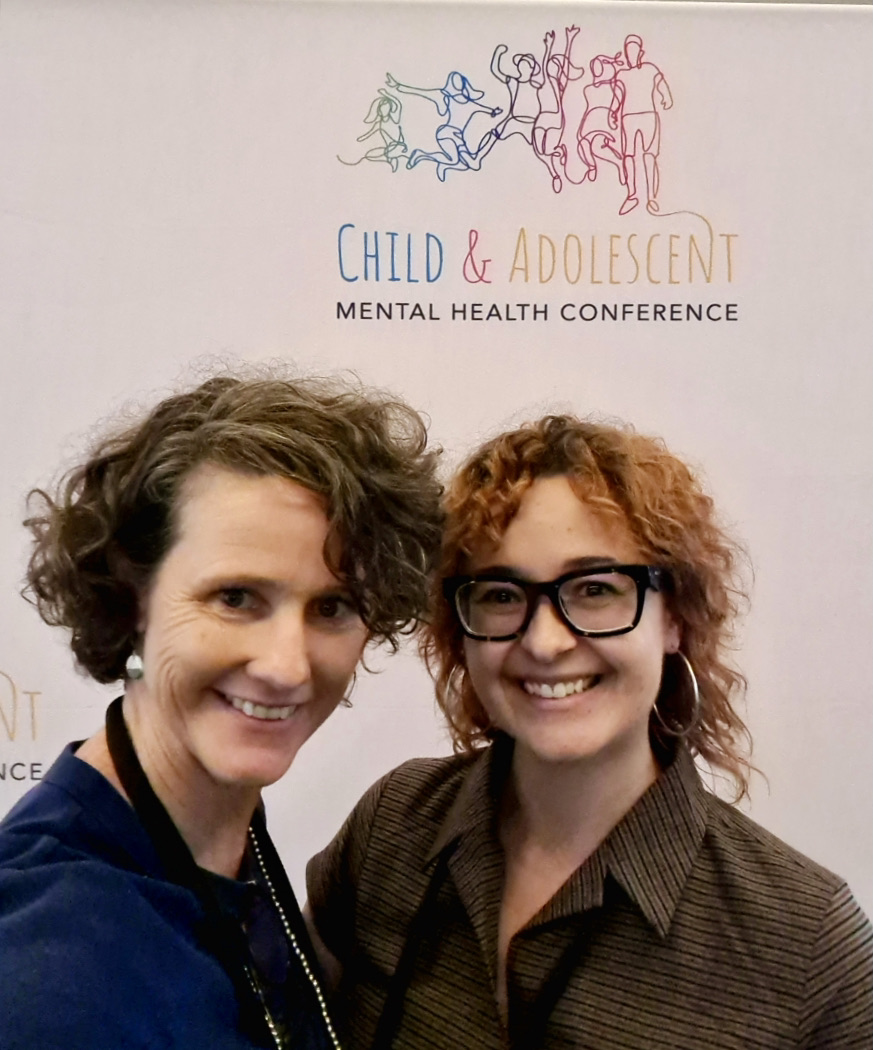
Two folks I have seen present multiple times before and am always impressed by are Professor Nicholas Proctor (University of South Australia) and Professor Daryl Higgins (Director, ACU Institute of Child Protection Studies).
Nicholas presented a keynote called “We Explain Our Actions Through Our Stories”: Trauma Informed Mental Health and Suicide Prevention. This talk focused on life histories in the context of person-centred care and provided a framework to collaboratively develop person-centred approaches in mental health and suicide prevention. I especially appreciated the post-presentation discussion about the importance of individuals mapping the events leading to suicidal behaviour rather than reacting after the fact. Nicholas spoke about the importance of individuals developing and owning their own insights about what kinds of experiences, thoughts, and feelings preceded their suicidal behaviour.
Daryl’s keynote was called Where Does Fostering Mental Health Start and Finish? Child Maltreatment Prevalence, Prevention, and Responses. This talk used data from the Australian Child Maltreatment Study (ACMS) to highlight that:
- child maltreatment is more prevalent than many realise: 62% of Australians aged 16+ have experienced one or more kinds of child abuse or neglect
- the ‘typical’ experience is of multiple types of child maltreatment
- mental health interventions need to be trauma-centred, given the strong association between multiple-forms of child maltreatment and mental illnesses
- the strong association found between child maltreatment and diverse sexuality and gender identities is critical for understanding the social and mental health vulnerabilities of these groups, and informing services needed to support them.
